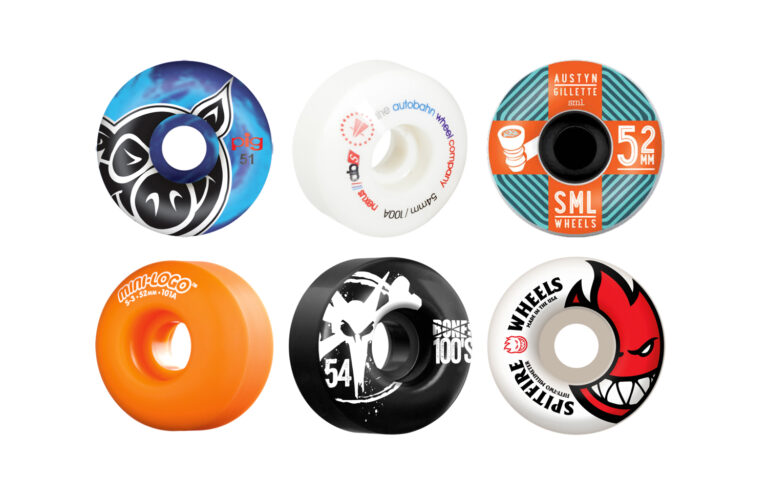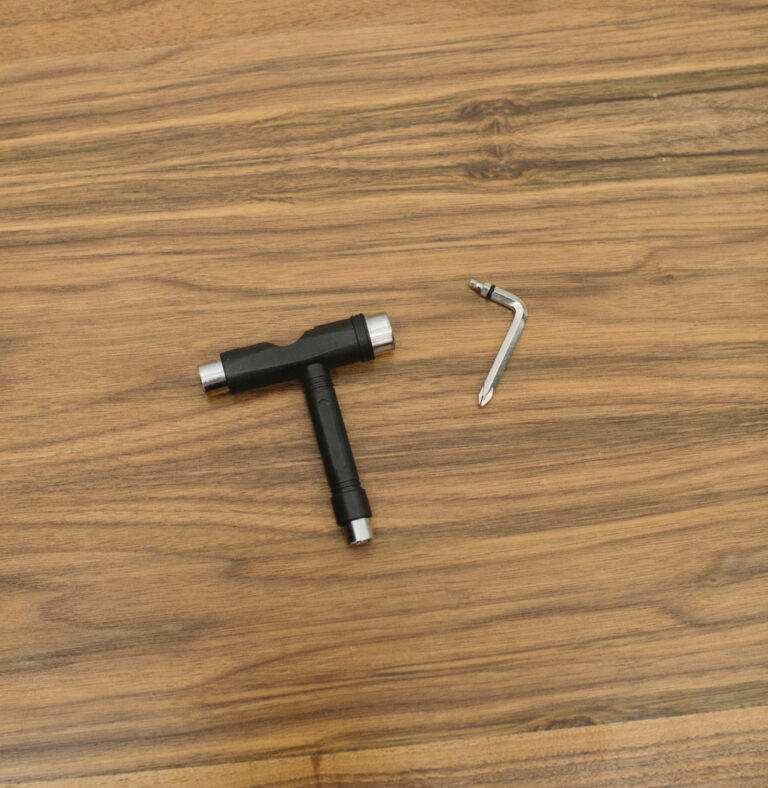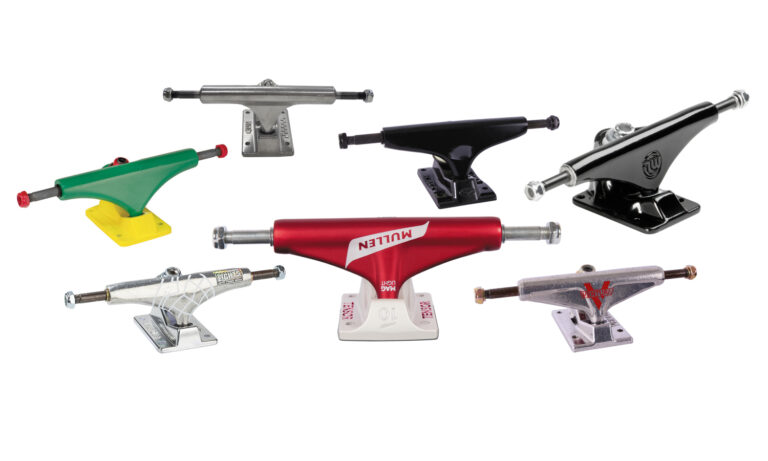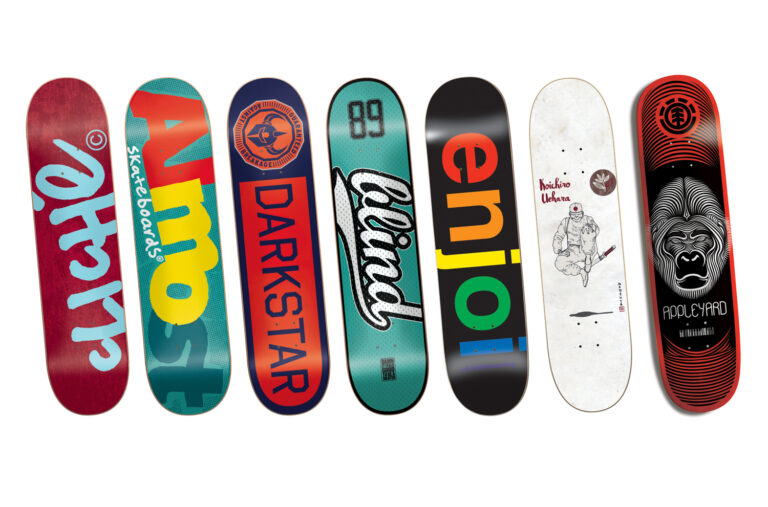
It might still be a fairly new activity – but skateboarding history has a lot of depth…
From Sidewalk Basics – Autumn 2013
The very first rudimentary skateboards began to appear in the 1960’s but at this time the boards were little more than toys which mimicked surf boards and came with metal or clay wheels which made doing anything beyond riding down the smoothest street virtually impossible. Skateboarding stayed in this state until the mid 1970’s when the first ‘skateboard craze’ took over the world and skate culture, as we know it today began to emerge.
1970’s
Skateboarding boomed in the mid to late 1970’s with its popularity exploding across the world. Advances in wheel technology, (namely Frank Naseworthy’s invention of the polyurethane ‘Cadillac’ skateboard wheel in 1973) suddenly allowed skateboarding to move beyond the flat ground due to better wheel traction and durability and in turn, skateboarding became to number one leisure past time across the globe.
As its popularity increased the idea of sponsorship and professional skateboarding was born and the limits of what could be done on a skateboard was pushed beyond all expectations and many of the basic tricks still done today were invented by this first generation of rippers.
Skaters such as Stacey Peralta, Tony Alva, Steve Olson, Duane Peters and Jay Adams pushed the boundaries of skateboarding tricks and skateboarding became an activity with a set of defined tricks, rather than the surf-influenced toy it had been previously.
The 1970’s also saw the beginnings of the idea of the custom-built skateboard facility with skateparks appearing in every major city across the USA and Europe. Unfortunately many of these skateparks were built quickly and shoddily; often by people with no knowledge of skateboarding who were purely interested in capitalising on the skateboard boom. Sadly, this created a situation whereby skaters injured themselves on badly constructed skateparks and often sued the park owners causing thousands of skateparks to close, sometimes less than a year after opening. This, combined with the overall assumption that skateboarding was nothing more than a passing fad, eventually led to a bust situation and by the end of the 1970’s only the most hardcore skateboarders were left, often with nowhere but backyard pools left to skate.
1980’s
By the beginning of the 1980’s skateboarding was virtually dead, at least as far as the mainstream of society was concerned, and the numbers of skaters globally was in the thousands, as opposed to the millions of skateboarders a decade earlier.
As the few remaining skateparks closed, those skaters left took matters into their own hands and began building backyard vert ramps that mimicked sections of the huge bowls found in the original 70’s concrete parks.
A small but thriving DIY scene evolved around these home-built ramps with small-scale contests put on by skaters to which everyone still involved in the skateboarding scene would travel.
The few companies still left from the 70’s era backed this backyard DIY scene and promoted the reemergence of skateboarding, which in turn, gave birth to a new skateboard media in the form of Thrasher and Transworld magazines, both of which were founded during this era.
As the backyard renaissance began to take effect, skateboarding slowly began to grow in popularity again until by the mid 80’s the few pro skaters left in the USA began to appear in major movies such as Back to the Future (1985), Police Academy 4 (1987) and Gleaming the Cube (1989).
Skateboarding was back in the public eye and by the end of the 1980’s vertical skateboarding was at the peak of its popularity with pros such as Christian Hosoi and Tony Hawk earning millions of dollars a year.
1990’s
And then, almost as soon as it had come into the ascendant, vertical skateboarding was dead (as far as the skateboard media was concerned).
New, smaller, skater-owned companies had begun to emerge at the very end of the 1980’s vertical skateboarding boom who pushed a completely different form of skateboarding, one that had never really been seen previously and, more importantly, a type of skateboarding that didn’t require custom built obstacles.
Born from a fusion of technical flatland freestyle skateboarding of the 1980’s and a newly emerging emphasis on street culture – street skating’s time had come.
Spearheaded by Steve Rocco and his family of brands, street skating took over before the major vert pros of the previous era even had time to notice.
Magazines and videos focused on technical skateboarding, new tricks and progression, as opposed to the power and consistency of the vert scene and this new outlook took over. New brands, new pros and new tricks emerged daily and, couple with the rise of affordable video cameras and editing software, began to spread this new movement with skateboarding across the globe.
As the 90’s progressed, skateboarding explored many dead ends of technicality until finally, by the end of the decade, street skating had progressed into the powerful, technical phenomenon we know today.
2000’s
 By the turn of the millennium skateboarding, in all its forms, was again massively popular the world over. Televised ‘Extreme-sports’ events such as the X-Games brought skateboarding into the homes of kids across the world and, along with the release of the hugely popular Tony Hawk’s Pro Skater video game in 1999, skateboarding was everywhere once again.
By the turn of the millennium skateboarding, in all its forms, was again massively popular the world over. Televised ‘Extreme-sports’ events such as the X-Games brought skateboarding into the homes of kids across the world and, along with the release of the hugely popular Tony Hawk’s Pro Skater video game in 1999, skateboarding was everywhere once again.
The skateboard industry had begun to diversify by this point and where the industry had once been composed of only a handful of small brands, from 2000 onwards, it saw major footwear and apparel companies (both skater and non-skater owned) begin to offer big money contracts to top pros on a scale that hadn’t been seen since the late 1980’s era.
The third Golden Age of skatepark construction began, bolstered by the sustained popularity of skateboarding and new, modern skateparks began to appear everywhere.
Skateboarding ambassadors like Tony Hawk became famous to the outside world, skateboarding began to appear in TV advertisements for every product imaginable and the level of progression with skateboarding itself surpassed anyone’s expectations.
More and more skateboarding events appeared in the mainstream media with contests such as the Street League Series, Dew Tour and Maloof Money Cups touring the globe and introducing skateboarding to millions.
The future
Today in 2013, skateboarding is a permanent fixture of street culture in every country of the world. From Afghanistan to Australia, there are skateboarders, skateparks and people filming and photographing skateboarding. The Internet has made it possible for skaters anywhere in the world to be in contact and as such we have truly become a global culture.
As for where skateboarding will go next; who knows?





